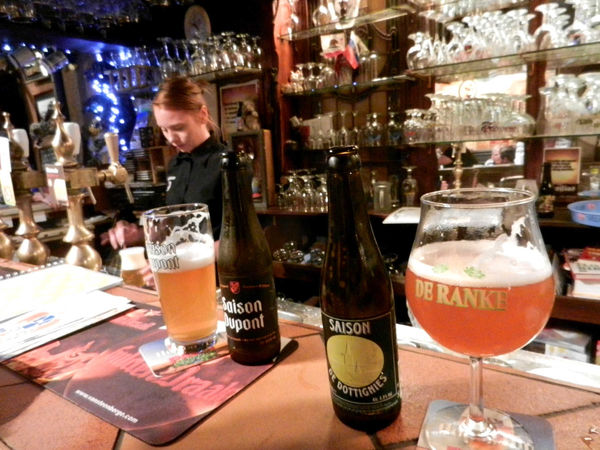European Beer Basics
By Rick Steves

When I'm far from home, I become a cultural chameleon. I eat and drink regional specialties with gusto, feasting on steak and red wine in Tuscany and stuffing down tapas at midnight in Spain. So when I travel to countries that are known for their beer, I morph into the best beer aficionado I can be.
Germany is synonymous with beer, and there's no better place to drink up than in Bavaria. German beer is regulated by the Reinheitsgebot (Purity Decree) of 1516 — the oldest food and beverage law in the world — which dictates that only four ingredients may be used: malt, yeast, hops, and water. You can order your beer helles (light but not "lite") or dunkles (dark).
Beer gardens go back to the days when monks brewed their beer and were allowed to sell it directly to the public. They stored their beer in cellars under courtyards kept cool by the shade of chestnut trees. Eventually, tables were set up, and these convivial eateries evolved.
My favorite beer garden (and German beer) is an hour's drive outside of Munich at the Andechs Monastery. The stately church stands as it has for centuries, topping a hill at the foot of the Alps. Its Baroque interior — and its beer hall — both stirs the soul and stokes the appetite. The hearty meals come in medieval proportions.
Belgians would argue that they, not their German neighbors, have Europe's best beer. With about 120 varieties and 580 different brands — more than any other country — locals take their beers as seriously as the French do their wines. But the best beers are not available from a tap. The only way to offer so many excellent beers fresh is to serve them bottled. The best varieties generally are available only by the bottle.
Belgian beers come in various colored ales, lagers, and white (wheat) varieties and are generally yeastier and higher in alcohol content than beers in other countries. Lambics, popular in Brussels, are the least beer-like and taste more like a dry and bitter farmhouse cider. Another Belgian specialty is the Trappist beer — heavily fermented, malty, and brewed for centuries by monks between their vespers and matins. Try a Westmalle, Rochefort, Chimay, or Orval.
Belgians are exacting consumers when it comes to beer. Most special local beers are served in a glass unique to that beer. Connoisseurs insist that each beer's character comes out best in the proper glass. If a bar runs out of a specific glass, the bartender asks if you'll accept a similar glass. Many Belgians will switch beers rather than drink one from the wrong glass.
Another devout beer region is the Czech Republic. Czechs are among the world's most enthusiastic beer drinkers. Whether you're in a restaurant or bar, a pivo (beer) will land on your table upon the slightest hint to the waiter, and a new serving will automatically appear when the old glass is almost empty.
After the end of the Cold War, most former Communist countries had lots of workers going west for jobs. But Czechs say their workers mostly stayed in the Czech Republic as they couldn't imagine living in a place without their beloved local brews. And Czechs don't go from bar to bar like many other Europeans. They say, "In one night you must stay loyal to one woman and to one beer."
The Czechs invented Pilsner-style lager in Plzeň, and the result, Pilsner Urquell, is on tap in many pubs. Other good beers include Krušovice, Gambrinus, Staropramen, and Kozel. "Budweiser Budvar" is popular with Anheuser-Busch's attorneys; the Czech and the American breweries for years disputed the name "Budweiser." The solution: Czech Budweiser brewed in the city of Ceske Budejovice is sold under its own name in Europe but marketed as "Czechvar" in the US.
The British are equally passionate about their pubs. Short for "public house," pubs are a basic part of the social scene and an extended living room. Many were built in the late 1800s, when pubs were independently owned and land prices were high enough to make it worthwhile to invest in fixing them up.
Brits take great pride in their beer, and many think that drinking beer cold and carbonated, as Americans do, ruins the taste. At pubs, long-handled pulls are used to pull traditional, rich-flavored "real ales" up from the cellar. These are the connoisseur's favorites: fermented naturally, varying from sweet to bitter, often with a hoppy or nutty flavor. Short-handled pulls at the bar mean colder, fizzier, mass-produced keg beers that don't taste as good — at least to Brits.
Of course, beer tastes are subjective. What makes a fine beer in one country changes the second you go elsewhere. Experimenting is part of the fun. So wherever you are, belly up to the bar, try a local beer or two, and discover your own favorite brew.

